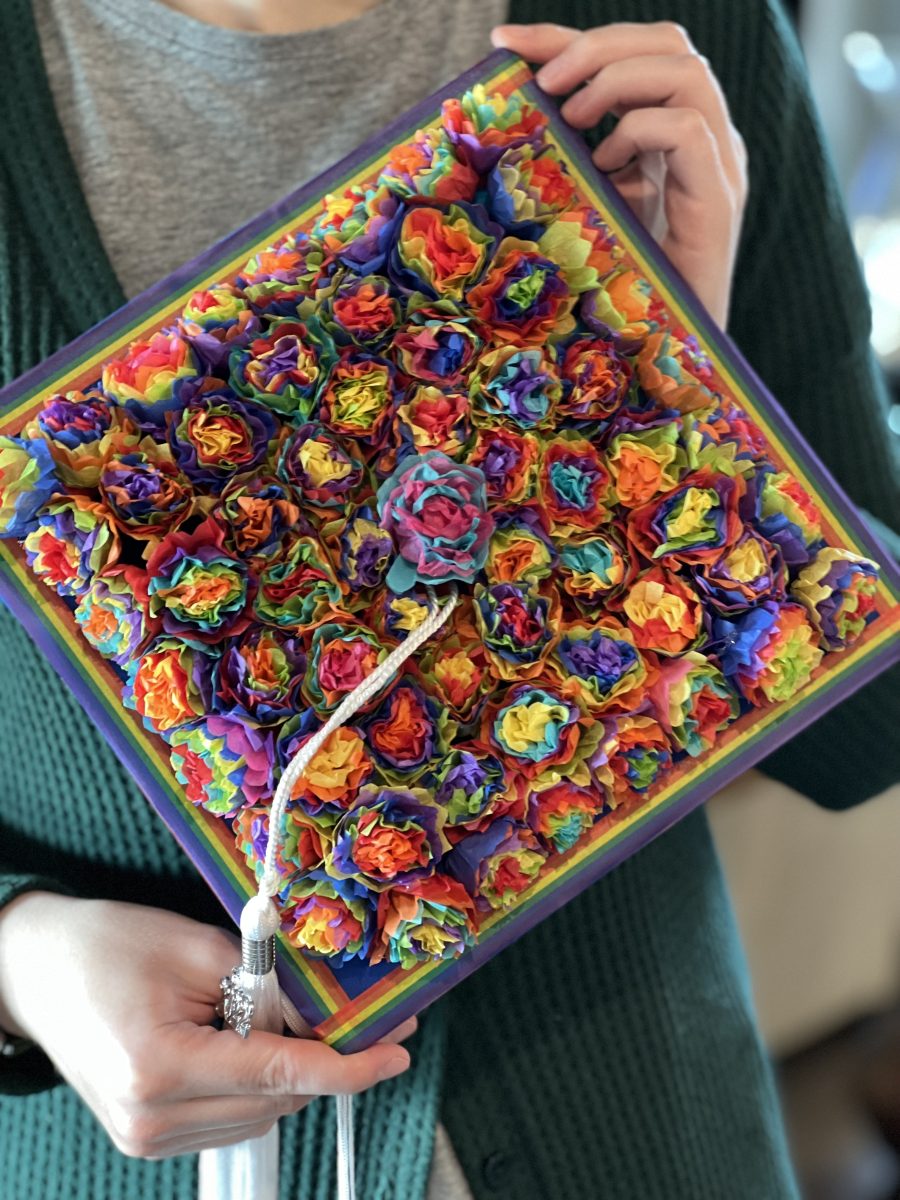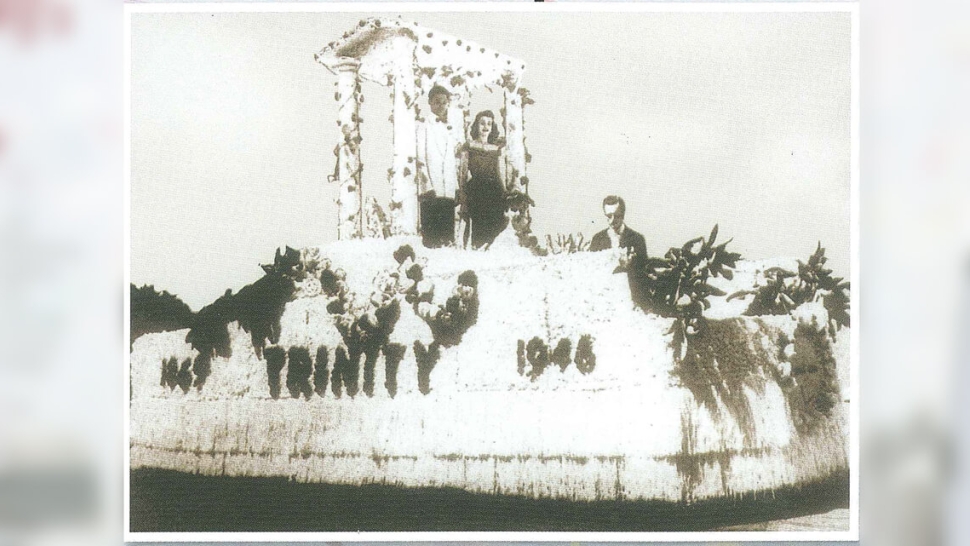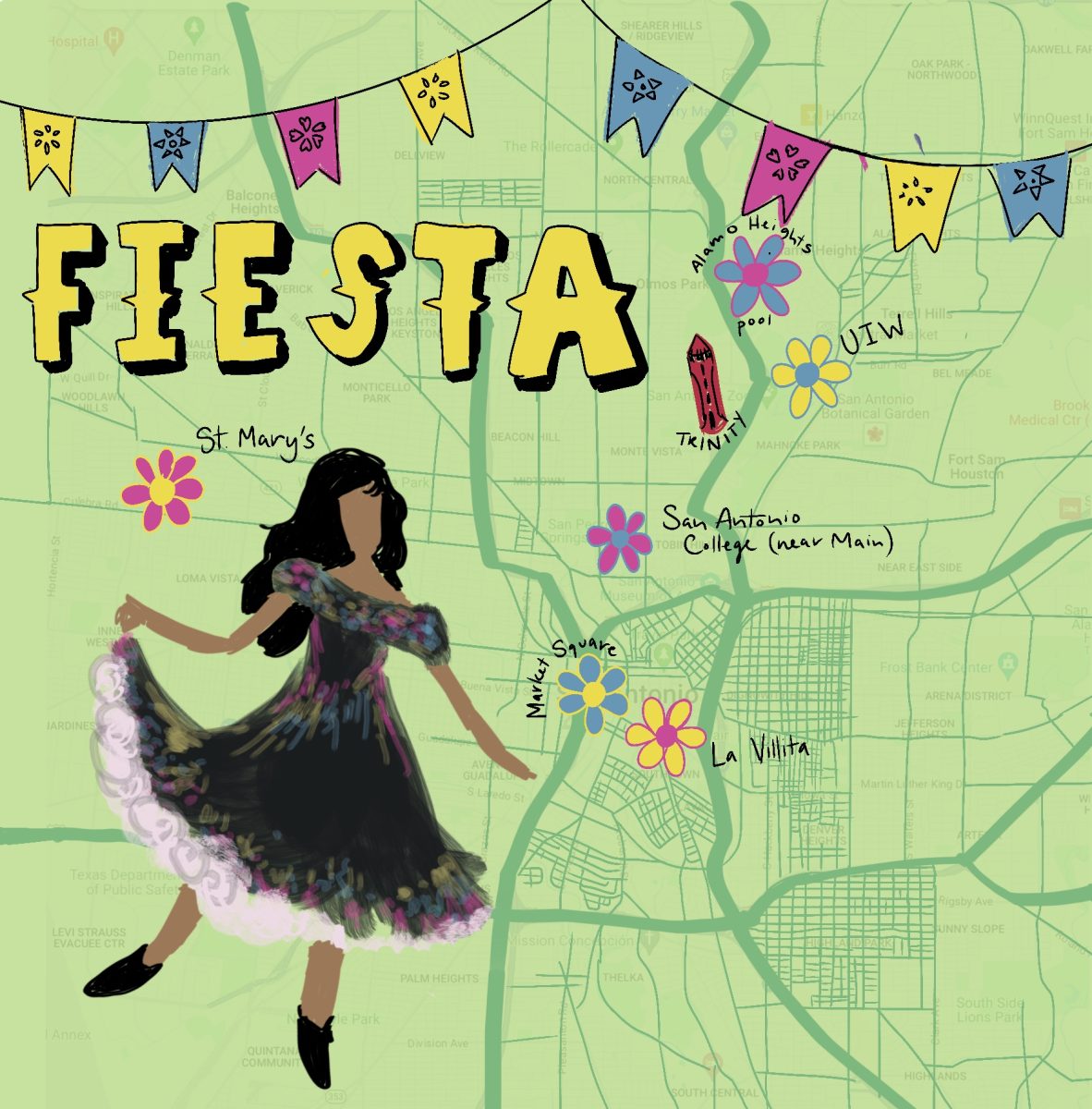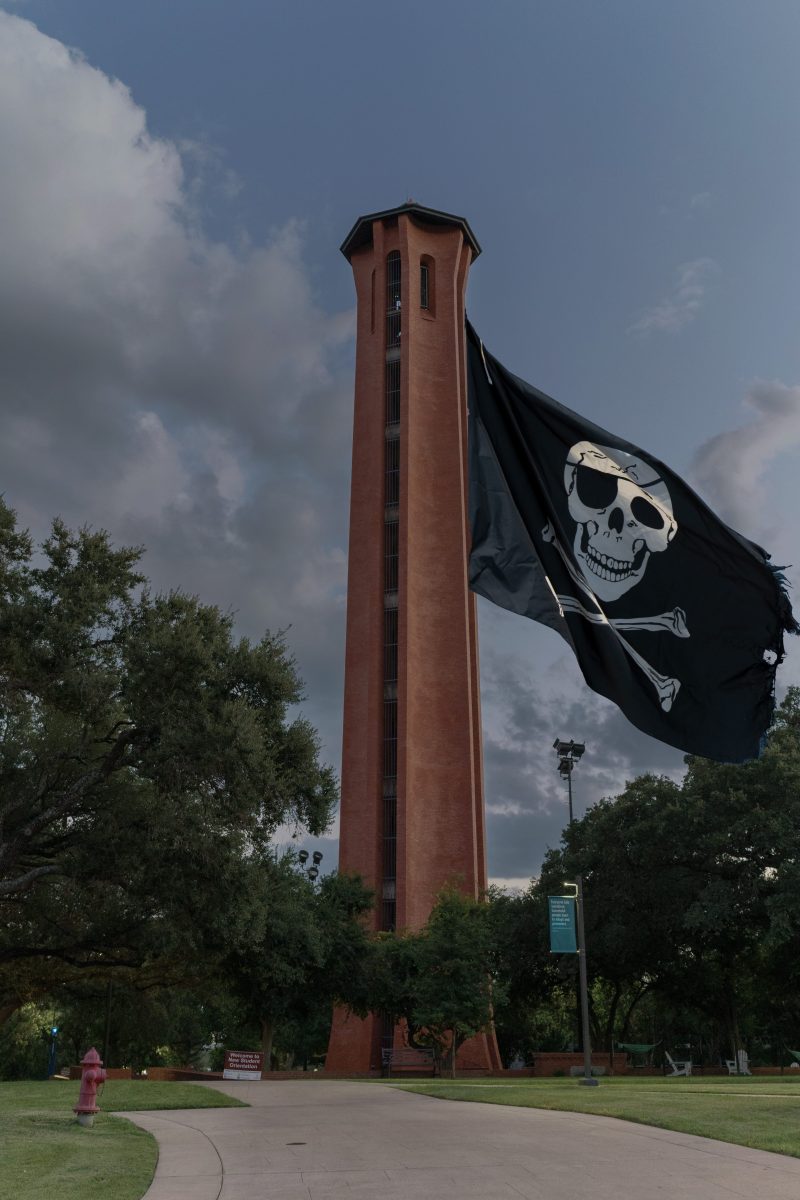Trinity University was founded in 1869, and Fiesta began in San Antonio not long after in 1891. Fiesta originated as Fiesta San Jacinto, a salute to the heroes of the Alamo and San Jacinto battles. Since then it has morphed into something entirely its own — a 10-day extravaganza when San Antonio residents have the opportunity to come together and celebrate the city’s vibrant culture. Over the years, the way that the Trinity community has interacted with the Fiesta celebrations has grown and evolved.
Historical documents show that Trinity has been involved in Fiesta since the 1900s. President James W. Laurie was named Grand Marshal of the Battle of Flowers Parade in 1970. For many years, Trinity selected students to participate in the Miss Fiesta San Antonio pageant, a tradition that only stopped when a court member missed two weeks of classes due to Miss Fiesta-related obligations.
Trinity also has a float in the Texas River Cavaliers Parade, and the Alumni Association sponsors a gathering of alums for the parade. TULA also hosts an annual Fiesta event that will feature mariachi and dance performances this year.
Amy Stone, associate professor of sociology and anthropology, wrote a book about Cornyation, a satirical Fiesta show that has always added levity to the city’s Fiesta celebrations.
Stone spoke about how her experience with Fiesta has changed over time.
“I first just went as a spectator. I went down to Cornyation, which is an event that a co-worker had told me about, and I saw the show and thought, ‘This will be very interesting to study someday,’ ” Stone said.
Stone’s interest in Cornyation prompted her to get hands-on experience in the production of the show.
“I started getting involved in the show as a way of studying it — spending time backstage, I was on the stage crew for two years, and then I was busy with writing the book,” Stone said.
Cornyation’s origins as a mock debutante pageant parodying of the coronation of the Queen of the Order of the Alamo interested Stone, as well as the event’s historical roots in the San Antonio LGBT community.
“The history of [the event] was super fascinating to me, that it used to be linked to this sort of debutante event, and also that there’s a lot of gay artistry in Cornyation,” Stone said.
In the 1990s Cornyation became a registered nonprofit organization, and proceeds from its shows go to AIDS-related charities.
Fiesta medals are also part of Trinity tradition. Vee Dubose, university designer, creates a new medal every year. Dubose also helps make Cat Alliance Fiesta medals, decorated with the faces of cats from Trinity’s campus. Cat Alliance Fiesta medals are a 10-year tradition. The medals were originally made of bottle caps, but now will look more like traditional medals.
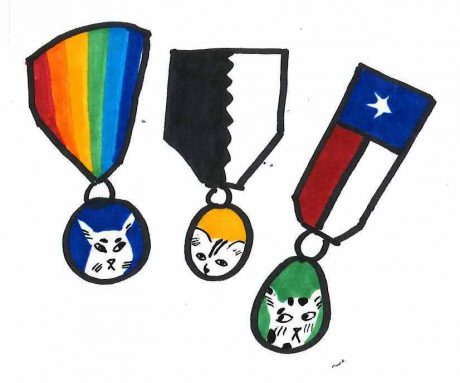
Mindy Morales, computer-aided design technician and founder of the Cat Alliance, discussed the Cat Alliance Fiesta medals.
“We were looking for a fundraiser and did T-shirts in the fall, and then we thought for the spring, ‘Everyone’s doing Fiesta medals, let’s do something that’s cute,’ and created some bottle cap medals. And they were very successful,” Morales said.
This year’s Cat Alliance Fiesta medals will feature Beau, the cat who resides with the sculptors in Dicke Smith Art Building.
The Cat Alliance Fiesta medals are usually sold for between five and 10 dollars.
Whether it be pageants, parades, books or medals, the Trinity community has always been a part of Fiesta traditions. Students with questions about Stone’s book or the Cat Alliance Fiesta medals can email [email protected] or [email protected], respectively.

